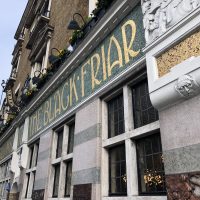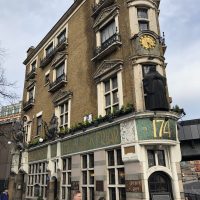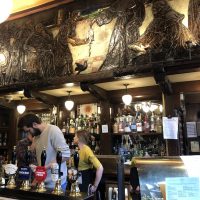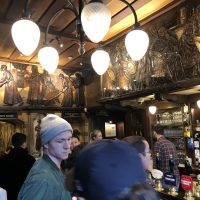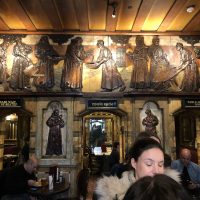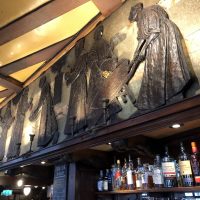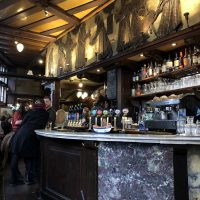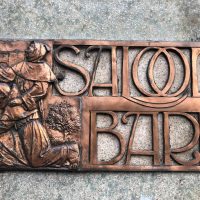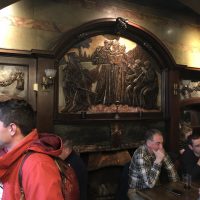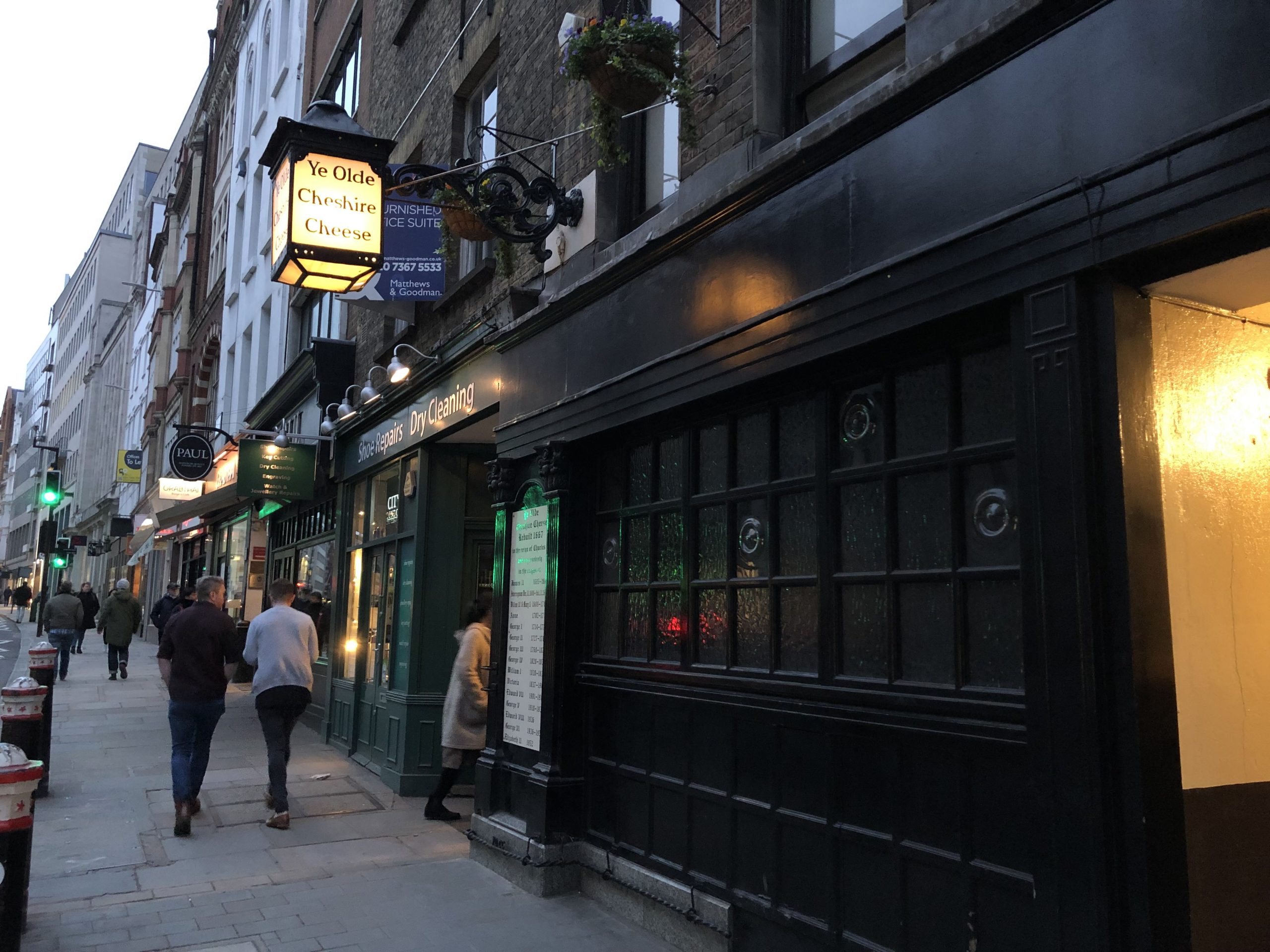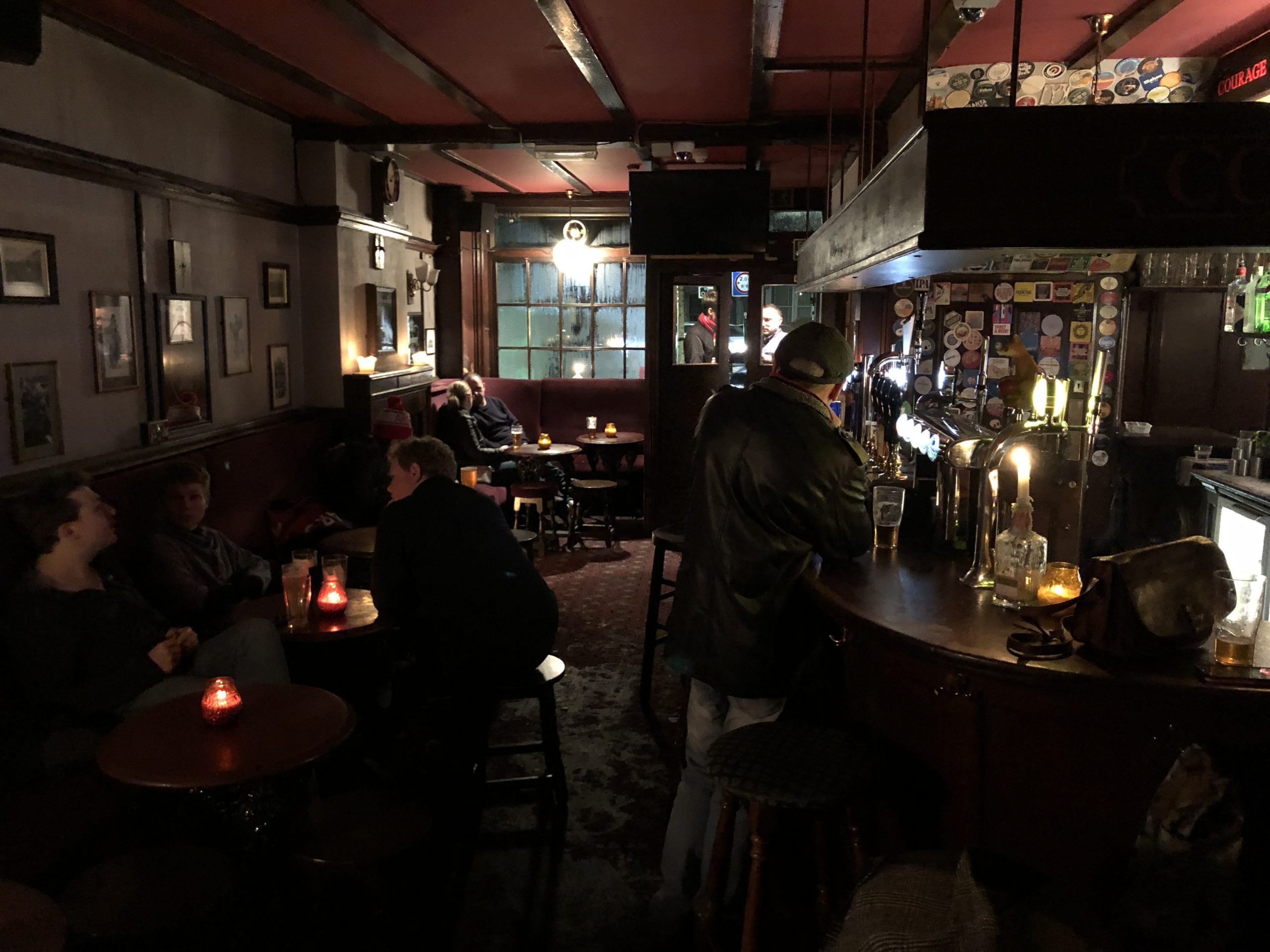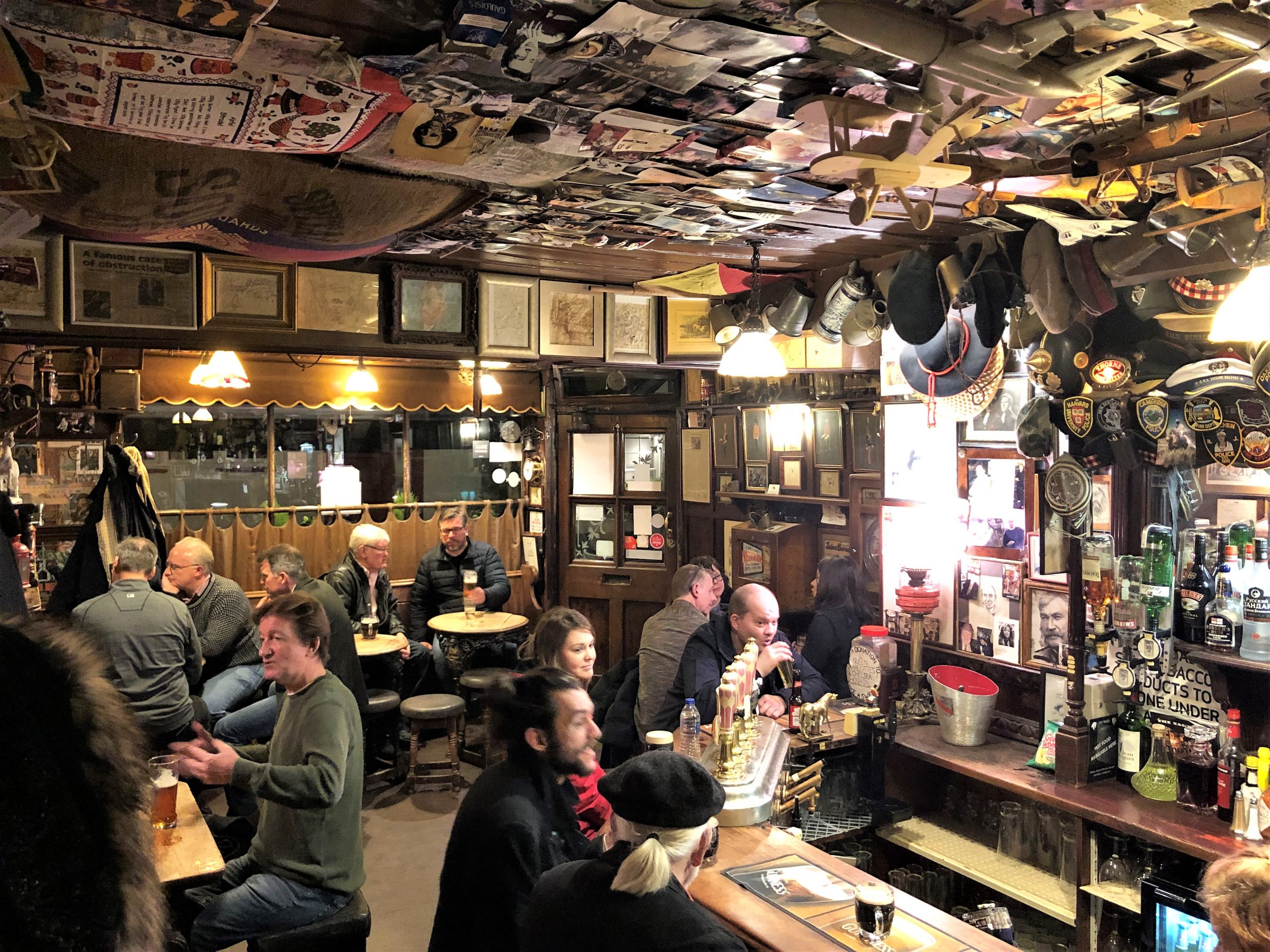The Blackfriar
London, England
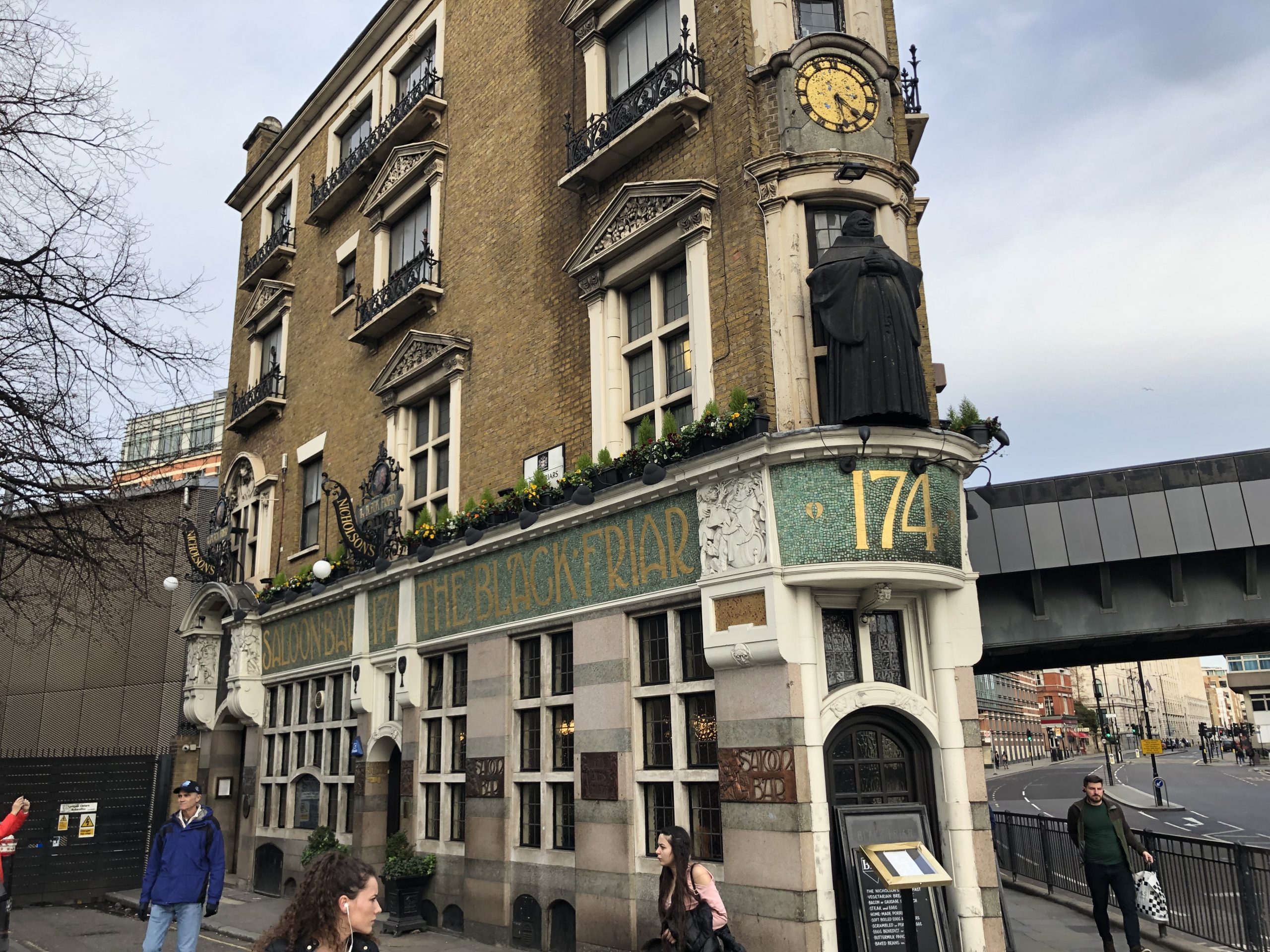
Field Rating
10
out of 10
If you’re into friars, have we got the place for you.
The Basics
174 Queen Victoria StLondon EC4V 4EG
Connect
Official Site
In Short
Field Note
Not every Scoundrel’s Field Guide entry has a corresponding Wikipedia page and a spot on a national registry, but here among the dive bars lives the Blackfriar, a London neighborhood pub built in 1875 on the site of a former Dominican friary. Iconic in just about every way, you don’t need a nudge from this reviewer to visit, but nudge we shall as the Blackfriar is one of London’s most picturesque pubs, both inside and out, without the pretention that sometimes comes with that kind of distinction.
The building is unmistakable, jutting out like a knife through London traffic, a few steps away from the Thames. And if somehow the building blended into the chaos of a densely-populated London neighborhood, the sign is jaw-dropping with bold, gold lettering screaming the name of the pub and the address. The lure of alcohol is strong, but a few moments on the building are worth it, from the classic artwork above the front door to the intensely beautiful windows to a set of friar-themed reliefs.
Inside, the atmosphere only improves, bathed in the glow of stained glass and ringed by relief sculptures on seemingly every vertical surface.
Inside, the atmosphere only improves, bathed in the glow of stained glass and ringed by relief sculptures on seemingly every vertical surface. The space is divided into a drinking area classy enough to be referred to as a lounge, a front room with low table seating and a dining area separated by a series of arches adorned with friars, underneath friars, probably carved by friars and named after friars. The theme is clear.
Every inch of the interior is mesmerizing, every room worth relocating to after every pint or so just to get a sense of the different facets of the space. The front room is dotted with low tables and chairs, divided here and there by snug-like, dark wooden separators, a room built for conversations among small groups, bathed in light thanks to the corner orientation of the room.
The pub space is dominated by the bar itself, a slow bend of a bar with a modest selection of taps visually anchored by a relief sculpture above that features, you guessed it, friars. Smooth wooden flooring complements the visual appeal of the space that includes small jut-outs from one of the walls just big enough for a couple of pints at most. Two red couches frame a classic fireplace, another relief and an interior archway. Like I said, this place is picturesque.
Every carving, every structure, every built-in feature is purposeful, an effort to maximize the drinking satisfaction to be derived by a building that was once, inexplicably, marked for demolition.
And there’s more to be found in the dining room, deep red carpeting, additional carvings, a vaulted ceiling, there is simply no end to the visual distractions that adorn every inch of the Blackfriar. Every carving, every structure, every built-in feature is purposeful, an effort to maximize the drinking satisfaction to be derived by a building that was once, inexplicably, marked for demolition and subsequently saved.
The Blackfriar isn’t a dive bar, it isn’t a local London neighborhood pub, it’s a cultural institution and honestly more of a museum than anything else. The sculptures, the structure, the ceiling, the sign, everything about The Blackfriar is artwork in service of alcohol, which is just the kind of lofty calling befitting a building and pub like The Blackfriar.
Related Reviews
Ye Olde Cheshire Cheese
London’s labyrinth pub
Bank of Friendship
Fire under foot.
The Nags Head
Worth the Tube trip

